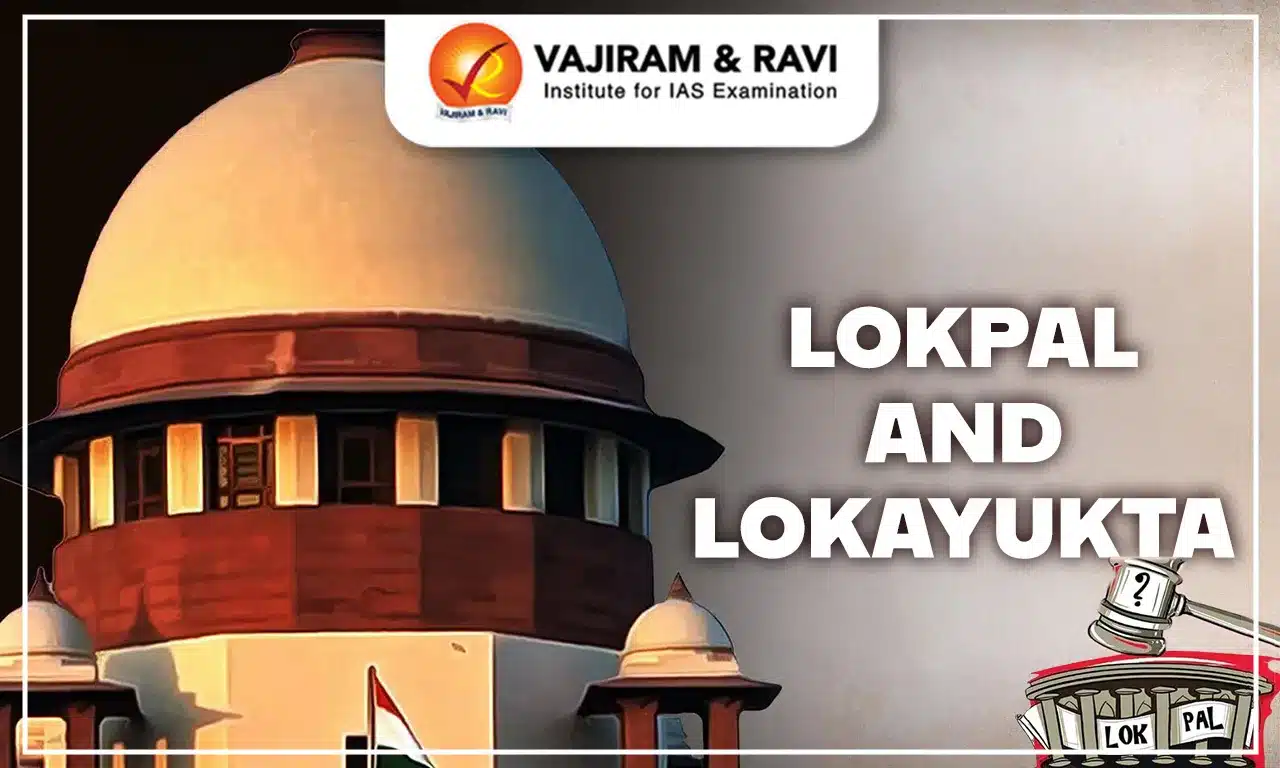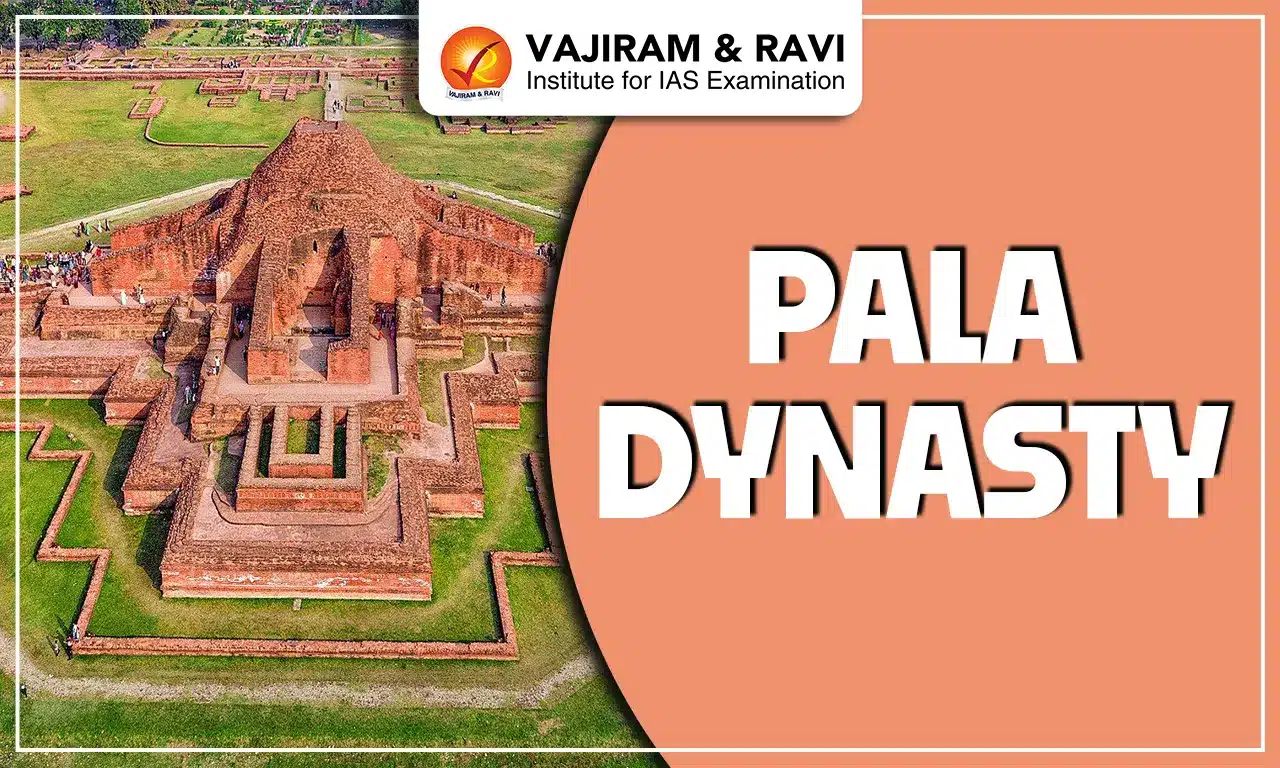Lokpal and Lokayukta
Lokpal and Lokayukta are public institutions established in India to investigate and prosecute corruption among public officials.
- Recommendation of ARC: In the 1960s, the Administrative Reforms Commission of India suggested the creation of two specialized authorities, the Lokpal and Lokayukta, to address citizens' complaints and grievances pertaining to corruption.
- Role of Ombudsman: Lokpal and Lokayukta perform the function and role of an “Ombudsman”. They inquire into allegations of corruption against certain public bodies/organizations and for other related matters.
- National and state level: The Lokpal is a national-level institution, while the Lokayukta is a state-level institution. Both have the power to investigate and prosecute corruption cases, and both are headed by a panel of judges or retired judges.
- Jurisdiction: The Lokpal and Lokayukta handle complaints against ministers and top government officials. The Lokpal's jurisdiction extends to Indian public servants both within and outside India.
What is the background and genesis of Lokpal and Lokayukta in India?
- The concept of ombudsman originated in 1809 in Sweden.
- In India, the former law minister Ashok Kumar Sen became the first Indian to propose the concept of a constitutional Ombudsman in Parliament in the early 1960s.
- Further, Dr. L. M. Singhvi coined the term Lokpal and Lokayukta in 1963. Later in the year 1966, the First Administrative Reform Commission passed recommendations regarding the setting up of two independent authorities at the central and at the state level.
- After the recommendations from the First Administrative Reform Commission, the Lokpal bill was passed in Lok Sabha in 1968 but lapsed due to the dissolution of Lok Sabha. Since then, the bill was introduced many times in Lok Sabha but has lapsed.
- Later, in 2002, the National Commission for Review of the Working of the Constitution (NCRWC) recommended the appointment of the Lokpal and Lokayuktas. In 2005, the 2nd Administrative Reform Commission(ARC) also recommended the same.
- The Anna Hazare movement, also known as India Against Corruption (IAC) movement, was led by social activist Anna Hazare, who began a hunger strike in April 2011 to demand the creation of an independent, effective anti-corruption body known as the Lokpal.
- As a result of the movement, the Lokpal and Lokayukta Bill was introduced in the Indian parliament and passed into law in 2013.
What are the key provisions of the Lokpal and Lokayukta Act 2013?
Key provisions of the Act include
- Selection Committee: which includes the Prime Minister as Chairperson, Speaker of Lok Sabha, Leader of Opposition in Lok Sabha, Chief Justice of India or a Judge nominated by him/her and one eminent jurist appointed by President.
- Jurisdiction: Jurisdiction includes the Prime Minister, Ministers, Members of Parliament, and group A, B, C, and D of government employees.
- Composition: It is composed of a chairperson and a maximum of eight members, with half of them being judicial members. 50% of members belong to Scheduled Castes, Scheduled Tribes, Other Backward Classes, minorities, and women.
- Superintendence: It has the power of superintendence and directs any investigative agency, including the Central Bureau of Investigation, for cases referred to it by the Lokpal.
- Foreign Contribution (Regulation) Act, 2010 (FCRA): Jurisdiction includes foreign donations in excess of Rs 10 Lakhs per year under the Foreign Contribution Regulation Act.
- The Act provides a requirement for establishing Lokayukta institutions through state legislation within 365 days of the Act coming into effect.
- While the Chairperson/Member cannot be a Member of Parliament or State Legislature, the Chairperson is not restricted to the Chief Justice of India (CJI). It can also be a former Supreme Court Judge or an eminent person with specified qualifications.
- The Chairperson or a Member shall not be a person of less than forty-five years of age on the date of assuming office as the Chairperson or Member, as the case may be.
Lokpal and Lokayukta (Amendment) Act 2016
The amendment changes the Lokpal and Lokayuktas Act 2013 with regard to the reporting of assets and liabilities by public officials.
- Allows the leader of the largest opposition party in the Lok Sabha, in the absence of a recognized Leader of Opposition, to be a member of the selection committee that chooses the ombudsman.
- The bill modifies section 44 of the Act, which originally dealt with the requirement for public officials to report their assets and liabilities within 30 days of starting their government service.
- The amendment eliminates the 30-day time frame in section 44, and public officials will report their assets and liabilities as outlined by the government.
Changes with respect to the functions of the CVC
The enactment of the Lokpal and Lokayuktas Act will help the Central Vigilance Commission work in an independent and assertive manner:
- Sections 8A and 8B were added in CVC Act, 2003 empowering the commission to enquire into references made by the Lokpal in respect of members of Group 'B', 'C', 'D' services of the central government and such level of officials or staff of the corporations, companies, societies and local authorities owned by the central government.
- The CVC also has been bestowed with the powers of superintendence over the CBI in so far as it relates to the investigation of offenses alleged to have been committed under the Prevention of Corruption Act, 1988, to ensure greater objectivity and accountability in its functioning.
What is the existing governance framework to check corruption in India?
- Prevention of Corruption Act, 1988: It is the main law for addressing corruption in India. It provides for the punishment of public servants who engage in corrupt practices.
- Central Bureau of Investigation (CBI): Main agency responsible for investigating corruption cases involving public servants.
- Central Vigilance Commission (CVC) and State Vigilance Commission: Handle citizens' grievances related to corruption.
- National Human Rights Commission (NHRC): Citizens can file complaints if they feel that their rights have been violated.
- The All-India Services (Conduct) Rules, 1968 prohibit government employees from engaging in any activities that may compromise their integrity or impartiality, such as accepting gifts or bribes, engaging in partisan political activities, or disclosing confidential information.
- The Central Civil Services (Conduct) Rules, 1964 prohibit central government employees from engaging in activities that may compromise their integrity or impartiality.
- Administrative tribunals such as Central Administrative Tribunal (CAT) are specialized courts that hear and decide disputes related to the administrative actions of government agencies related to matters of corruption.
How far have the institutions of Lokpal and Lokayuktas been effective?
Some major issues regarding the implementation of the Lokpal and Lokayuktas Act, 2013 include
- Selection Committee: The Lokpal and Lokayukta Act of 2013, despite being passed in 2014, was not implemented due to the absence of a Leader of Opposition (LoP) in the 16th Lok Sabha.
- However, the Supreme Court clarified that this absence should not stall the appointment process for the Lokpal.
- In addition, a Parliamentary Standing Committee in 2015 submitted a report supporting the amendment to replace the LoP with the leader of the single largest opposition party in the Lok Sabha.
- Lokayukta: According to a report by Transparency International
- Out of the total states and UTs, nine -- Assam, Bihar, Chhattisgarh, Delhi, Goa, Jharkhand, Kerala, Madhya Pradesh, and Uttar Pradesh -- have not amended their Lokayukta Acts to bring them in line with the Lokpal and Lokayukta Act of 2013.
- Only four states -- Bihar, Manipur, Odisha, and Tamil Nadu have appointed judicial and non-judicial members of the anti-corruption ombudsman Lokayukta.
What are the limitations of the Lokpal and Lokayukta Act 2013?
The Lokpal and Lokayukta Act 2013 has several drawbacks that have been criticized by experts and activists. Some of these include
- Lack of independence: The act allows the government to have a significant influence over the appointment and functioning of the Lokpal, which may compromise its independence.
- Anonymous complaints not allowed: The act does not permit anonymous complaints, which may deter potential whistleblowers from coming forward.
- Limitation of 7 years: The act sets a 7-year limitation period to file a complaint, which may not be sufficient for some cases.
- Heavy punishment for false complaints: The act provides for severe punishment for false or frivolous complaints, which may deter people from coming forward with valid complaints.
- Lack of transparency: The act provides for a non-transparent process for dealing with complaints against the Prime Minister.
- The Lokpal cannot initiate an investigation on its own against any public servant.
- The form of the complaint is given more importance than the content of it.
Way Forward
To effectively combat corruption, it is necessary to enhance the independence and resources of the ombudsman institution.
- Functional autonomy: In order to tackle the problem of corruption, the institution of the ombudsman needs to be strengthened both in terms of functional autonomy and the availability of manpower.
- Financial and administrative independence: Lokpal and Lokayukta must be financially, administratively, and legally independent of those whom they are called upon to investigate and prosecute.
- Transparency and leadership: Greater transparency, citizen empowerment, and access to information, as well as strong leadership that is willing to be held accountable, are also crucial.
- Other decentralized institutions: To prevent the concentration of power in one institution, various decentralized institutions with proper accountability mechanisms should be strengthened. Additional text to be added here.
Lokpal and Lokayukta Act 2013 UPSC PYQs
Q1. Consider the following statements about Lokpal: (UPSC Prelims 2025)
- The power of Lokpal applies to public servants of India, but not to the Indian public servants posted outside India.
- The Chairperson or a Member shall not be a Member of the Parliament or a Member of the Legislature of any State or Union Territory, and only the Chief Justice of India, whether incumbent or retired, has to be its Chairperson.
- The Chairperson or a Member shall not be a person of less than forty-five years of age on the date of assuming office as the Chairperson or Member, as the case may be.
- Lokpal cannot inquire into the allegations of corruption against a sitting Prime Minister of India.
Which of the statements given above is/are correct?
a) 3 only
b) 2 and 3,
c) 1 and 4
d) None of the above statements is correct
Ans: (a)
Last updated on December, 2025
→ Check out the latest UPSC Syllabus 2026 here.
→ Join Vajiram & Ravi’s Interview Guidance Programme for expert help to crack your final UPSC stage.
→ UPSC Mains Result 2025 is now out.
→ UPSC Notification 2026 is scheduled to be released on January 14, 2026.
→ UPSC Calendar 2026 is released on 15th May, 2025.
→ The UPSC Vacancy 2025 were released 1129, out of which 979 were for UPSC CSE and remaining 150 are for UPSC IFoS.
→ UPSC Prelims 2026 will be conducted on 24th May, 2026 & UPSC Mains 2026 will be conducted on 21st August 2026.
→ The UPSC Selection Process is of 3 stages-Prelims, Mains and Interview.
→ UPSC Result 2024 is released with latest UPSC Marksheet 2024. Check Now!
→ UPSC Prelims Result 2025 is out now for the CSE held on 25 May 2025.
→ UPSC Toppers List 2024 is released now. Shakti Dubey is UPSC AIR 1 2024 Topper.
→ UPSC Prelims Question Paper 2025 and Unofficial Prelims Answer Key 2025 are available now.
→ UPSC Mains Question Paper 2025 is out for Essay, GS 1, 2, 3 & GS 4.
→ UPSC Mains Indian Language Question Paper 2025 is now out.
→ UPSC Mains Optional Question Paper 2025 is now out.
→ Also check Best IAS Coaching in Delhi
Lokpal and Lokayukta FAQs
Q1. Who is the first Lokpal of India?+
Q2. Whether the Lokpal and Lokayuktas Act, 2013 is applicable to the employees of State Governments?+
Q3. Is there any limitation period to file a case?+
Tags: lokpal and lokayukta quest

















